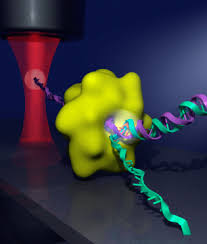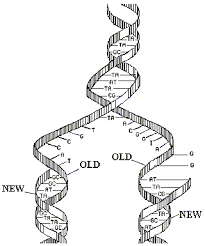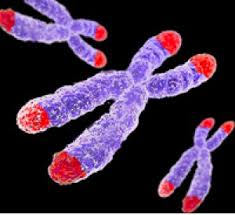So today we took more/ finished Chapter 16 Notes and took a vocab quiz!
Here are the notes we took today!
The lagging stand is synthesized in separate pieces called Okazaki Fragments, which are sealed together by DNA ligase to create a regular DNA strand.

An enzyme called primase is responsible for initiating DNA replication; it joins RNA nucleotides to create a primer, which is required in order for a DNA polymerase to proceed.
Helicases are enzymes that are responsible for unwinding the DNA helox as replication proceeds, and single-stand binding proteins hold the strands apart for duration of replication

There are several different factors contributing to the accuracy of DNA replication. They are:
-The specificity of base pairing
- Mismatch repair- in which special repair enzymes fix incorrectly paired nucleotides.
- Nucleotide excision repair- in which incorrectly placed nucleotides are excised by an enzyme called a nuclease, and the gap left over is filled in with the correct nucleotides.

The fact that DNA polymerase can only add nucleotides to the 3' end of a molecules would mean that it would have no way to complete the 5' end of the 5' end of the molecules.
Thus the linear chromosomes of eukaryotes utilize an enzyme called telomerase, which catalyze the ends of the molecules called telomeres

Our Chapter 16 Quiz is Friday so here are some multiple choice questions for practice!
1. Which of these is a difference between RNA and DNA?
a) DNA contains Uracil, while RNA contains thymine
b) DNA is a polymer made up of nucleotides, while RNA is a polymer made up of nucleic acid
c) DNA is Double-stranded, while RNA is a single-strand
d) DNA contains five-carbon sugars, while RNA contains six-carbon sugars
e) DNA contains nitrogenous bases, while RNA contains phosphate groups
2. Short segments of newly synthesized DNA are joined into a continuous strand by a ________.
a) Helicase
b) DNA polymerase
c) Ligase
d) Primase
e) Single-strand binding protein
3. Why is the new DNA strand complementary to the 3' to 5' strands assembled in short segments?
a) The replication forks block the formation of longer strands
b) DNA polymerase can assemble DNA only in the 3' to 5' direction
c) DNA polymerase can assemble DNA only in the 5' to 3' direction
d) It is more efficient than assembling complete new strands
e) Only short DNA sequences can extend off the RNA primers
4. The synthesis of a new strand begins with the synthesis of a(n) ______.
a) Single-strand binding protein
b) Okazaki fragment
c) Short pieces of DNA
d) RNA primer complementary to a preexisting DNA strand
5. An old DNA strand is used as a _____ for the assembly of a new DNA strand.
a) complement
b) primer
c) template
d) source of nucleotides
e) model
ANSWERS: c, c, c, d, c
*Remember: Mrs. Lyon will be gone for the rest of the week, so don't for get to bring your book and worksheets for the next three days!*
No comments:
Post a Comment